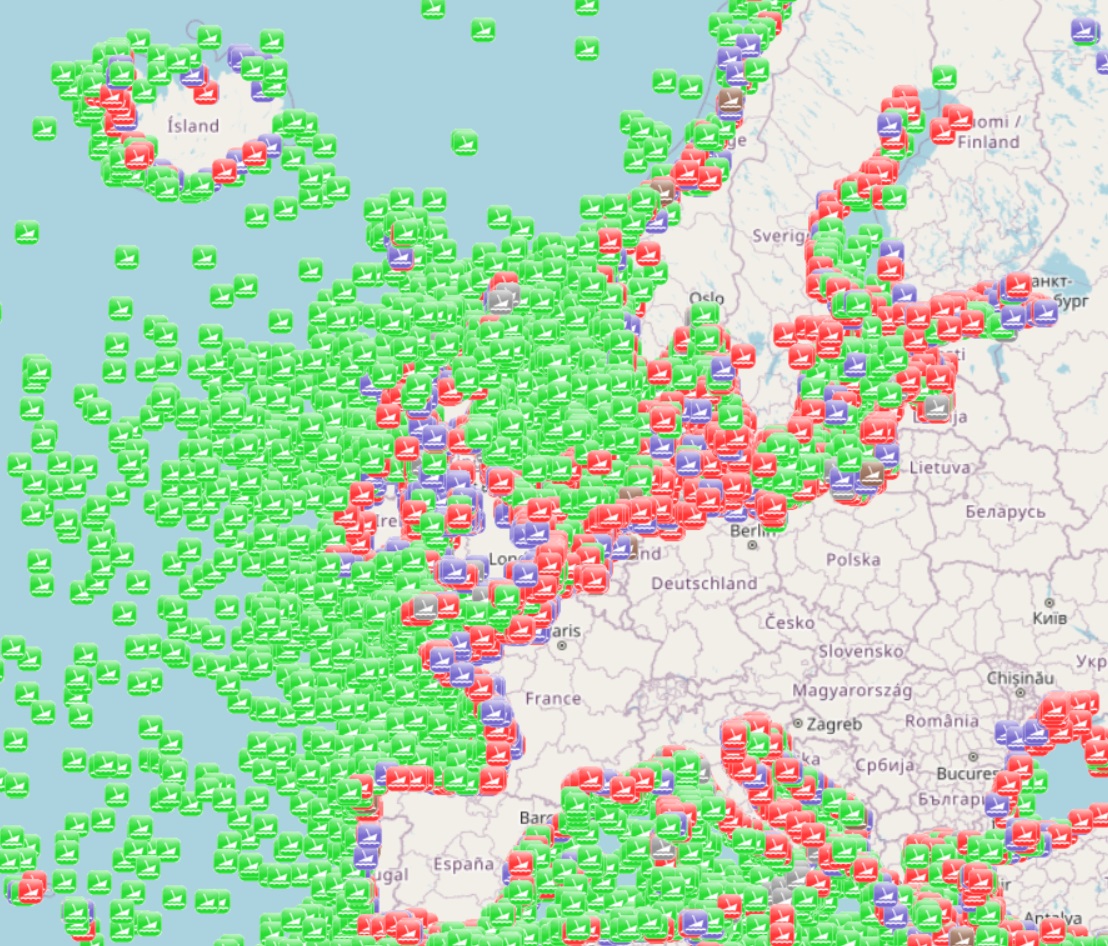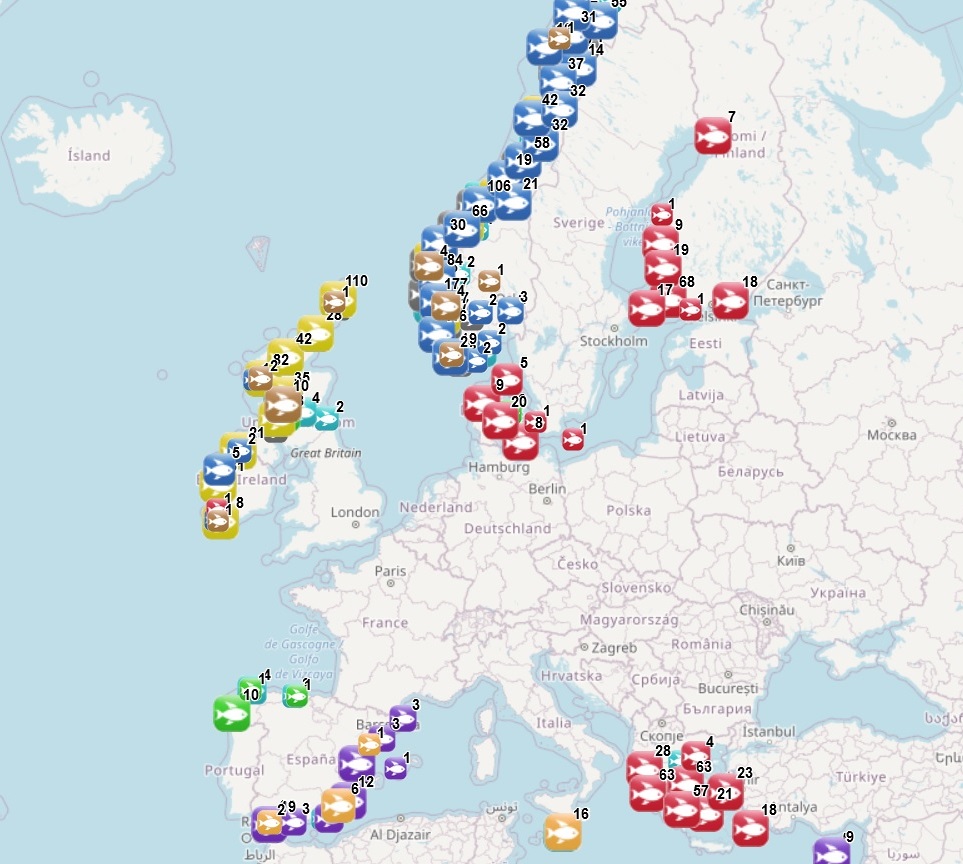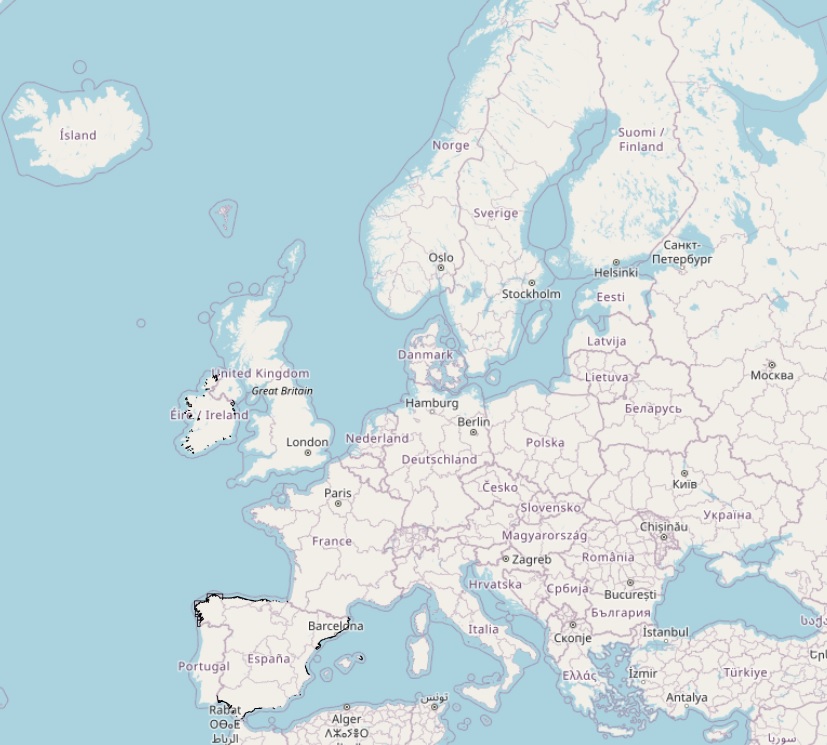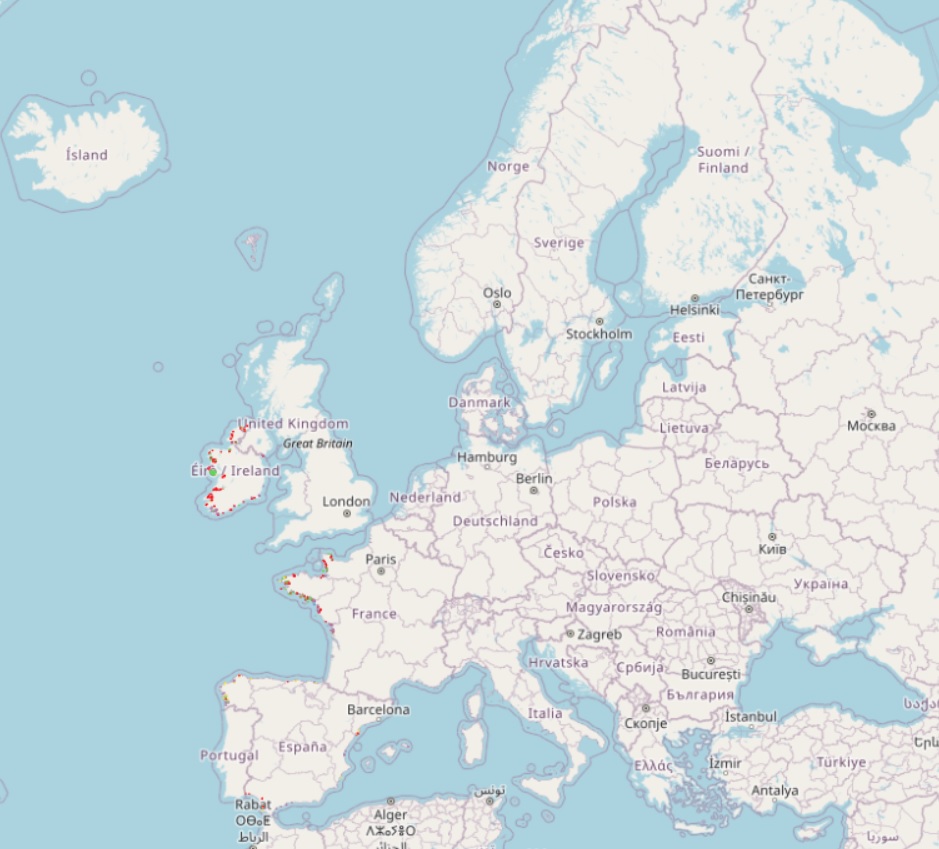100000
Type of resources
Available actions
Topics
Keywords
Contact for the resource
Provided by
Years
Formats
Representation types
Update frequencies
status
Scale 1:
Resolution
-

The dataset is a subset of the UK Hydrographic Office wrecks and obstructions data set. It contains over 67,000 charted, uncharted, live and dead wrecks from around the world. Where available each point has the following attributes: Wreck Id, Wreck category, Status, Position, Latitude, Longitude, Horizontal datum, Position method, Depth, Depth method, Depth quality, Depth accuracy, Water depth, Water level, Vertical datum, Name, Type, Flag, Length, Width, Draught, Sonar length, Sonar width, Shadow height, Orientation, Tonnage, Tonnage type, Cargo, Conspic visual, Conspic radar, Date sunk, Bottom texture, Scour dimensions, Debris field, Original sensor, Last sensor, Original detection, Last detection, Origin, Markers, Circumstances of loss, Surveying details, General comments, Last amended. The original dataset is updated on a quarterly basis and is made available free of charge under an Open Government Licence, which can be accessed here: https://www.nationalarchives.gov.uk/doc/open-government-licence/version/3/.
-

The dataset on marine finfish aquaculture in the EU was created in 2017 by AND-International for the European Marine Observation and Data Network (EMODnet). The dataset provides information about the location of marine finfish farms in the EU and partner countries where data are available. There is an obligation for EU MS to inventory all authorized aquaculture sites under the Council Directive 2006/88/EC on animal health requirements. Despite this obligation, the availability of data varies among MS from no data available at all to a complete regularly updated dataset. As far as partner countries are concerned, data have been collected only in Norway and the UK (Scotland only), where detailed data are provided online. Data provided here cover Cyprus, Denmark, Estonia, Finland, Greece, Ireland, Malta, Norway, Spain and the United Kingdom (Scotland only). Data collection is still undergoing in other EU MS and neighbouring countries. Each point has the following attributes (where available): Country, Owner name, Status (Active, n.a.), Farm type (Salmonids, Flatfish, Seabass-seabream and other coastal fish, Tuna, Other, n.a.), Production method (Sea cages, Saltwater tanks/raceways, Saltwater ponds, Saltwater closed (recirculation), Quarantine, Other, n.a.), Production stage (Grow out for human consumption, Hatchery, Nursery, Broodstock, Reproduction, Restoration of wild stock, Put and take fisheries, Processing facility, Slaughtering facility, Research facility, Sea ranching, Other, n.a.), Purpose (Commercial, Display, Education, Research, Capture-based aquaculture, Fishing park, Other, n.a.), Species_source (detailed information on species names as presented in the source and translated to English), Point information (Polygon centroid, Original) depending on how the information is provided in the source (polygons or points), Site_ID, the distance to coast (in meters), the position from Coastline (At sea or Within the coastline), the ID from the source to facilitate traceability, and the year the data was updated in the source. The farm type relies on a typology established by AND-International, based on available information on species grown. A relational table provides harmonised information about species grown using Eurostat nomenclature for the Species Group, the species name (commercial and scientific) and the Eurostat code (ALPHA-3 code for species). The data has been updated for all countries available and additional fields were added to improve traceability (ID from source and Year updated in the source). Data from Spain are available for viewing but not for download. Data from other countries are available for viewing and download.
-
The European seabass (Dicentrarchus labrax) nursery grounds dataset is derived from the existing (Bacq et al, 2013) nursery ground map available in the Sextant Ifremer data catalogue. (Bacq et al, 2013) nursery ground dataset has been modified in order to comply with the standard format developed by the EMODnet Seabed Habitats Lot. In that EMODnet format, the map key classifies areas as ‘high’, ‘medium’, and 'low' suitability.
-
The common sole (Solea solea) nursery grounds dataset is derived from the existing (Bacq et al, 2013) nursery ground map available in the Sextant Ifremer data catalogue. (Bacq et al, 2013) nursery ground dataset has been modified in order to comply with the standard format developed by the EMODnet Seabed Habitats Lot. In that EMODnet format, the map key classifies areas as ‘high’, ‘medium’, and 'low' suitability.
-
The Atlantic herring (Clupea harengus) nursery grounds dataset is derived from the existing (Bacq et al, 2013) nursery ground map available in the Sextant Ifremer data catalogue. (Bacq et al, 2013) nursery ground dataset has been modified in order to comply with the standard format developed by the EMODnet Seabed Habitats Lot. In that EMODnet format, the map key classifies areas as ‘high’, ‘medium’, and 'low' suitability.
-
The European sprat (Sprattus sprattus) nursery grounds dataset is derived from the existing (Bacq et al, 2013) nursery ground map available in the Sextant Ifremer data catalogue. (Bacq et al, 2013) nursery ground dataset has been modified in order to comply with the standard format developed by the EMODnet Seabed Habitats Lot. In that EMODnet format, the map key classifies areas as ‘high’, ‘medium’, and 'low' suitability.
-
"Site Condition Monitoring has been (SCM) undertaken to determine whether the status of the special interest features which underpin the designation of habitats or areas are being maintained, and to guide site management action where appropriate. This study aimed to provide additional baseline data against which future changes can be measured to support Natural England’s overall programme of monitoring and surveillance of the sites into the future."
-

The dataset on the shellfish protected areas under the Water Framework Directive (WFD) was created in 2023 by AND-International for the European Marine Observation and Data Network (EMODnet). The Directive (Article 6, paragraphs 1 and 2) requires Member States to designate areas which require specific protection of their surface water and groundwater, or for the conservation of habitats and species directly depending on water. According to Annex IV (ii) of the WFD, these areas should include areas designated for the protection of economically significant aquatic species (shellfish in this case). This dataset compiles the designated areas as provided by national sources (The Department of Housing, Planning, Community and Local Government of Ireland and The Ministry for Ecological Transition and Demography in Spain) and it is available for viewing and download on EMODnet web portal (Human Activities, https://emodnet.ec.europa.eu/en/human-activities). Each polygon has the following attributes: area ID (in EMODnet), country, area name, designation date, ID from the source.
-

The dataset on licensed sites of shellfish aquaculture in the EU was created in 2023 by AND-International for the European Marine Observation and Data Network (EMODnet). It is the result of the aggregation and harmonization of datasets provided by national sources representing the delimitation of shellfish farms (polygons) in the following countries: France, Ireland and Spain. Data from France and Spain comes from national and regional cadastral data, while data from Ireland comes from the list of registered aquaculture sites. Each polygon has the following attributes (where available): country, expiration date, farm type (Mussels, Oysters, Mussels-Oysters, Clams, Specialised (other), Mixed (other)), species from the source (English translation of the information provided on species grown or authorised in the source), production method (Beds, Long lines, Rafts, Saltwater closed (recirculation), Saltwater ponds, Saltwater tanks/raceways, Trestles or trays, Bouchot, On-bottom, Sea cages, Other), production stage (Broodstock, Grow out for human consumption, Harvest, Hatchery, Nursery, Reproduction, Wild capture of seeds, Purification, Maturing, Other), purpose (only specified for some sites authorised for research purposes), polygon information (Lines to Polygon or Original) depending on how the information is provided in the source (polygons or lines), site_id, year updated (in the source), shape length and shape area. The farm type relies on a typology established by AND-International, based on available information on species grown or authorised. A relational table provides harmonised information about species grown or authorised using Eurostat nomenclature for the Species Group (Mussels; Oysters; Clams, cockles, arkshells; Scallops, pectens; Abalones, winkles, conchs; Sea-urchins and other echinoderms) and when available the species name (e.g. Blue mussels - Mytilus edulis). Data are available for viewing and download on EMODnet - Human Activities web portal ( https://emodnet.ec.europa.eu/en/human-activities), except for the data from Spain, which are available in the viewer, but not for download.
-
A survey by JNCC in partnership with Cefas to Wight Barfleur Reef Special Area of Conservation. Located in the central English Channel, Wight Barfleur Reef is characterised by a series of well-defined exposed bedrock ridges, up to 5 m high, together with areas of flat, smooth mudstone and sandstone with overlying coarse sediment (gravels, cobbles and boulders), which in places forms stony reef, which has been designated to protect the EU Habitats Directive (1992) Annex I habitat feature Reefs.
 EMODnet Product Catalogue
EMODnet Product Catalogue